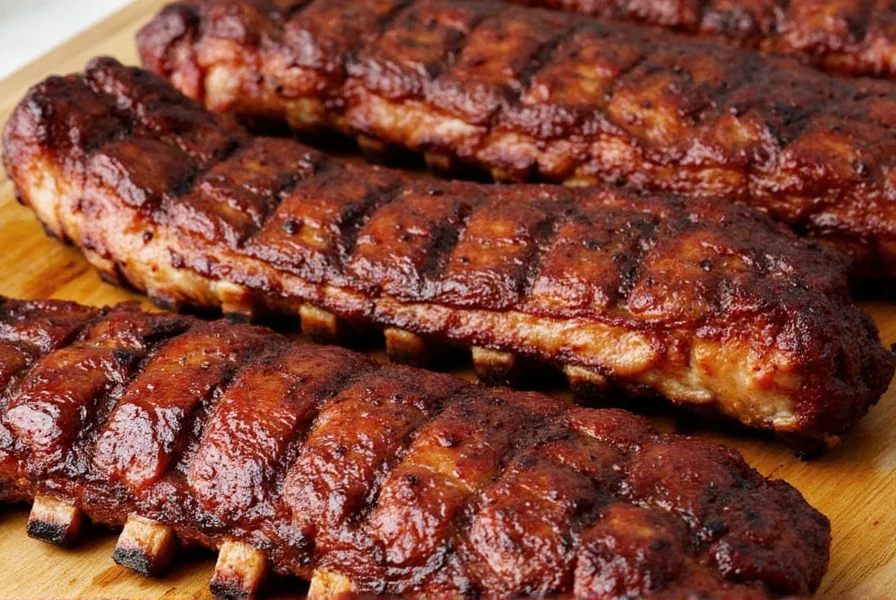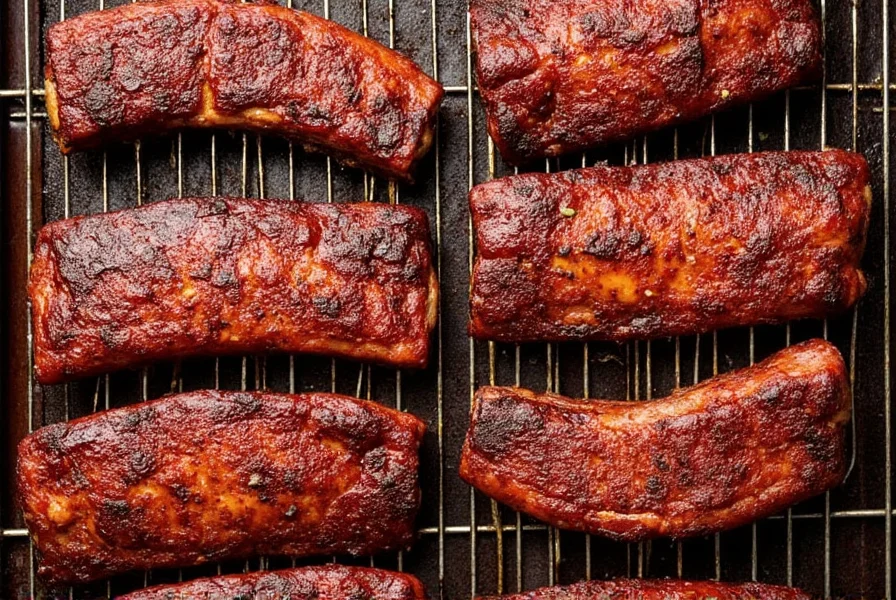When cooking ribs in the oven, the ideal temperature range is 275°F (135°C) to 300°F (150°C). This low-and-slow method ensures tender, juicy ribs without drying out. Cooking at this temperature allows collagen to break down properly, resulting in fall-off-the-bone texture while preserving moisture.

Why 275°F-300°F Is the Optimal Range
Cooking ribs at temperatures below 275°F risks undercooking and extended cooking times, while temperatures above 300°F can cause the meat to dry out or become tough. The 275°F-300°F range balances heat penetration and moisture retention, ensuring even cooking throughout the meat.
| Temperature | Cooking Time | Result |
|---|---|---|
| 250°F (120°C) | 4-5 hours | Very tender but risks overcooking if not monitored closely |
| 275°F (135°C) | 3-4 hours | Perfectly tender and juicy with optimal collagen breakdown |
| 300°F (150°C) | 2.5-3.5 hours | Fast cooking with good tenderness; best for busy schedules |
| 350°F (175°C) | 2-2.5 hours | Less tender; meat may dry out and become chewy |
Key Techniques for Perfect Oven-Roasted Ribs
- Use a meat thermometer: Insert it into the thickest part of the meat. Ribs are done at 190°F (88°C) internal temperature, when collagen fully breaks down.
- Wrap in foil: Cover ribs with aluminum foil during the last 30 minutes to trap steam and accelerate tenderizing. Unwrap for the final 15 minutes if applying sauce to allow caramelization.
- Place meat-side up: Position ribs on a baking rack over a sheet pan. No flipping is needed—oven heat distributes evenly without direct contact.
- Preheat thoroughly: Always preheat your oven to the target temperature before placing ribs inside to ensure consistent cooking from the start.

Frequently Asked Questions
Why is 275°F-300°F better than higher temperatures?
Higher temperatures (350°F+) cook ribs faster but cause rapid moisture loss and uneven collagen breakdown. The 275°F-300°F range allows slow, even heat penetration, resulting in tender meat without drying out.
How do I know when ribs are done without a thermometer?
While a thermometer is most reliable, you can test tenderness by gently twisting a bone. If it rotates easily and the meat pulls away from the bone, they're done. However, thermometer use is strongly recommended for accuracy.
Should I use a rack when cooking ribs in the oven?
Yes. A baking rack elevates ribs above the pan, allowing hot air to circulate evenly around all sides. This prevents steaming and promotes uniform cooking.
Conclusion
Mastering oven temperature is the foundation of perfect ribs. By cooking at 275°F-300°F, using a meat thermometer, and following these techniques, you'll consistently achieve restaurant-quality results. Remember: patience and precision with temperature control make all the difference between tough and tender ribs.










 浙公网安备
33010002000092号
浙公网安备
33010002000092号 浙B2-20120091-4
浙B2-20120091-4